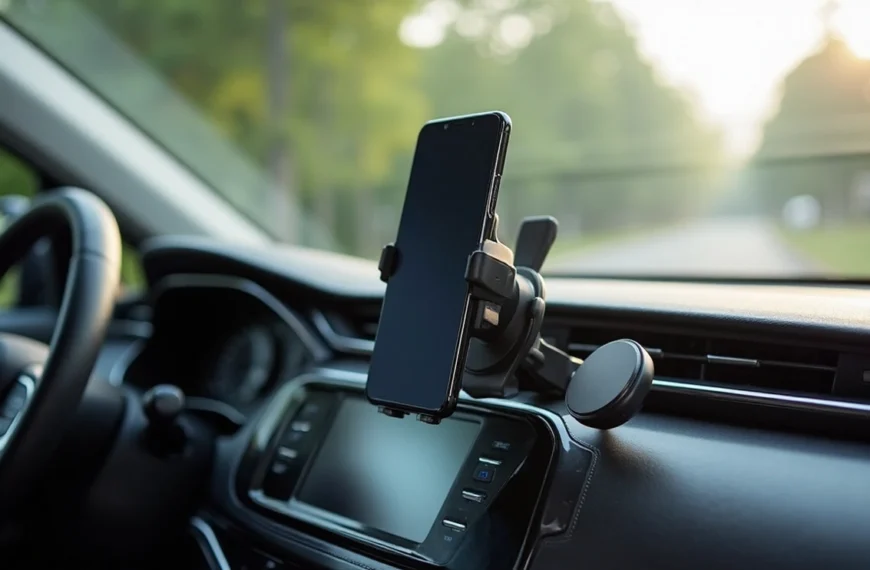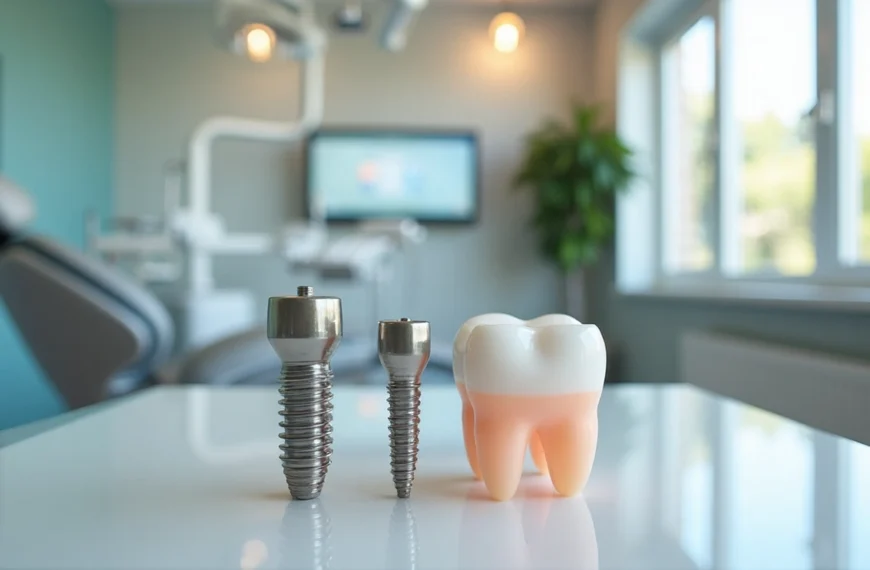Car insurance rates shot up 29% since 2023, and millions of Americans now desperately need to lower car insurance costs. The financial strain keeps mounting as full coverage costs could hit $2,670 yearly by February 2025. This jump stands out as the biggest increase among all major expenses in the consumer price index, leaving drivers scrambling to find ways to save money.
The sky-high premiums stem from multiple factors – inflation, costly repairs, bad weather, and more accidents on the roads. The good news? Smart drivers can still cut their insurance costs while keeping their essential coverage intact. This piece shows you practical ways to reduce your rates, from saving 20-25% by choosing higher deductibles to slashing costs by 40% with usage-based plans if you don’t drive much. Budget-conscious drivers who switch companies save $461 per year on average, so it pays to know how to direct your way through today’s insurance market.
Quick Wins: Easy Ways to Lower Car Insurance Rates
Image Source: Dreamstime.com
“Since 2024, the average cost of a full coverage car insurance policy has increased around 12 percent.” — Bankrate, Leading financial information and advice company
Car insurance rates keep going up, but you can cut your premiums quickly with a few simple changes. These easy adjustments don’t take much effort and will save you money right away on your car insurance.
Pay your premium annually instead of monthly
You can save money by paying your car insurance in one lump sum instead of monthly payments. Insurance companies often give discounts of approximately 4.7% when you pay in full. Big names like Progressive, Farmers, and Allstate give this discount to their customers.
Paying yearly helps you avoid monthly fees that add up over time. You won’t have to worry about missed payments, late fees, or gaps in your coverage. On top of that, you’ll have one less bill to think about each month when you pay upfront.
Use autopay and paperless billing for small discounts
Your rates can drop even more when you set up automatic payments and switch to electronic documents:
- Electronic billing statements can reduce premiums by 4-10% based on your insurance company
- You’ll save about 5% with automated payments
- Some companies give up to 5% off just for getting policy documents online
Insurance companies pass these savings to you because it costs them less to process electronic payments and documents. You can usually stack these discounts with other savings, which makes them a great deal.
Take a defensive driving course
A defensive driving course can save you good money, especially if you’re an older driver. Most states let you get 10-15% off certain coverages after taking a 4-8 hour course. New York drivers pay around $3,700 each year for insurance, but they can get 10% off after taking a state-approved defensive driving course that costs about $25.
The discount stays active for several years before you need to take another course. Each state has different rules, but many courses are available online. Best of all, these courses teach you skills that could help you avoid accidents in the first place.
Smart Policy Moves That Save Big
Image Source: Moton Legal Group
Smart policy adjustments will save you more money on car insurance than quick fixes. These changes need careful planning but will reward budget-conscious drivers with big savings over time.
Increase your deductible if you can afford it
Your deductible—the amount you pay before insurance covers a claim—can be a great way to cut car insurance costs. A jump from $500 to $1,000 can reduce your collision and comprehensive coverage cost by 15-30%. Some drivers save up to 40% or more with a $1,000 deductible.
Here’s a ground example: You could save about $635 each year by raising your deductible with average insurance rates. This table shows how it works:
| Comprehensive/Collision Deductible | Average Annual Premium |
|---|---|
| $100/$500 | $3,041 |
| $500/$500 | $2,638 |
| $1,000/$1,000 | $2,336 |
| $1,500/$1,500 | $2,205 |
Important caveat: Make sure you have enough money saved up to cover your deductible before increasing it. You should keep an emergency fund that matches your deductible amount.
Review and reduce unnecessary coverage
Older cars might not need collision and comprehensive coverage. Here’s a good rule: Drop these coverages if your car’s value is less than 10 times the insurance premium. To cite an instance, a $5,000 car with $600 yearly comprehensive and collision costs might not be worth the expense.
You might also cut out extra add-ons and specialized coverage that boost your premiums without adding much value. But never skimp on liability coverage – accident repairs and medical bills can reach hundreds of thousands of dollars.
Switch to a cheaper car to insure
Your choice of vehicle affects insurance costs by a lot. Small SUVs like the Honda CR-V or Toyota RAV4 usually cost less to insure. Subaru vehicles, especially the Forester and Ascent, tend to have lower insurance costs. Their premiums average $2,224 yearly compared to $4,098 for Tesla.
Several things cause this price gap: repair costs, safety ratings, and claim history for similar models. Getting insurance quotes before buying your next car could save you thousands over time.
Leverage Technology and Driving Habits
Image Source: GOLDLAW
Modern technology helps drivers reduce their car insurance rates based on their actual driving behavior. Telematics and tracking tools create opportunities to save money beyond regular discounts.
Enroll in usage-based insurance programs
Usage-based insurance (UBI) programs track your driving habits through telematics technology and reward safe drivers with lower premiums. These programs gather data through smartphone apps, built-in vehicle systems like OnStar, or devices that plug into your car’s diagnostic port.
Drivers save a median of $120 annually through telematics programs, with drivers under 45 saving around $145. Policies with three or more people show higher savings.
Major insurance companies give 5-10% discounts just for signing up. Safe drivers earn additional discounts after the 3-6 month monitoring period:
- Allstate Drivewise: up to 40% discount
- Nationwide SmartRide: up to 40% discount
- Progressive Snapshot: average savings of $231 annually
- State Farm Drive Safe & Save: up to 30% discount
Use apps that track safe driving for discounts
Insurance apps monitor key driving behaviors that shape your rates. The apps track hard braking, quick acceleration, cornering speed, phone usage, and your typical driving times.
These programs give you feedback through easy-to-use dashboards. State Farm’s app displays detailed trip maps that show where you made sudden stops or sharp turns. Progressive’s Snapshot app suggests driving improvements to increase your score and possible discount.
Drive less and report your mileage
Pay-per-mile insurance provides another way to cut costs for people who don’t drive often. These plans combine a base rate with a per-mile charge. Nationwide SmartMiles adjusts your monthly premium based on your actual driving distance.
The Federal Highway Administration reports that people drive about 13,500 miles each year. Pay-per-mile programs work best if you drive 10,000 miles or less. Metromile’s customers save an average of 47% compared to their previous insurance providers.
Long-Term Strategies to Reduce Premiums
“Some vehicles experience higher average insurance premiums than others because of MSRPs, safety features, repair costs, parts availability and other variable characteristics.” — Bankrate, Financial information and advice company
Smart financial decisions go beyond policy changes to lower car insurance rates. These strategies need patience but will save you substantial money over time.
Improve your credit score over time
Most states let insurance companies use credit-based insurance scores to set premiums. Research shows drivers with poor credit pay 66% more for full coverage than those with good credit. Your credit score improvement can be one of the best ways to cut insurance costs.
You can lower your premiums by boosting your score:
- Pay all bills on time—your payment history makes up about 35% of your credit score
- Keep credit card balances well below limits—try to stay under 10% of available credit
- Look for errors in your credit reports that could hurt your score
- Don’t open too many new accounts at once
Avoid accidents and traffic violations
Your driving history directly affects insurance costs for years. The national average premium jumps from $2,068 per year for clean records to $2,940 after a single at-fault accident—that’s $872 more each year. A speeding ticket alone adds $435 to your annual rates.
Most violations stay on your record for three to five years. Safe driving becomes an investment that pays off through lower insurance costs. A clean driving record free of claims and violations will help you qualify for extra safe driver discounts.
Reassess your policy after major life changes
Insurance companies look at life events to calculate premiums. Getting new quotes after big changes often reveals ways to save. You should check rates after:
- Moving somewhere new (rates can drop about 8% in less crowded areas)
- Getting married or entering a domestic partnership (many insurers offer better rates)
- Changing your commute (working from home or shorter drives can save over $100 yearly)
- Better credit scores (let your insurer know to get immediate savings)
Regular policy reviews during life changes help ensure you get the best rates for your coverage needs.
Conclusion
Finding Relief When Insurance Costs Soar
American drivers face their most important financial challenge – rising car insurance premiums. The rates have climbed dramatically, but you can still find several ways to reduce these costs while keeping your essential protection intact.
Simple changes to how you manage your policy can bring quick benefits. You’ll save 4.7% by paying your premiums annually instead of monthly saves 4.7%. Paperless billing and autopay setups can save you an extra 5-10%. Defensive driving courses are a great option too, especially when you have older drivers who can get 10-15% off after finishing a short course.
Smart adjustments to your policy could save you even more money. Your premiums might drop 15-30% if you raise deductibles from $500 to $1,000. Just make sure you have enough emergency money to cover this amount if needed. On top of that, it makes sense to look at what coverage you really need – older cars might not need comprehensive protection, and some vehicles just cost less to insure.
Technology is a vital part of getting personalized savings today. Usage-based insurance programs watch your driving habits and reward safe drivers with discounts reaching 40%. People who don’t drive much can benefit from pay-per-mile options, with some drivers saving up to 47% compared to regular policies.
The biggest rewards come to those who take a longer view. Your credit score is particularly influential – drivers with poor credit end up paying about 66% more than those with good credit. A clean driving record helps you avoid major premium increases too. Just one at-fault accident costs around $872 extra each year for several years.
Whatever strategies you choose, staying consistent matters. You should review your policy regularly, particularly after big life changes to keep your coverage appropriate and competitively priced. The sort of thing i love is how combining multiple approaches often saves you the most money. When you bundle discounts with safe driving habits and smart coverage choices, that overwhelming expense can become much more manageable.
Car insurance protects your financial security. But you don’t have to accept skyrocketing premiums. You can still find substantial savings through thoughtful changes, good habits, and regular reviews, even as industry rates keep climbing.
FAQs
Q1. How can I quickly reduce my car insurance premiums? You can lower your premiums by paying annually instead of monthly, setting up autopay and paperless billing, and taking a defensive driving course. These simple changes can lead to discounts of up to 15% on your insurance costs.
Q2. What policy changes can significantly lower my car insurance rates? Consider increasing your deductible if you can afford it, as this can reduce your premium by 15-30%. Also, review your coverage to eliminate unnecessary add-ons, and consider switching to a vehicle that’s cheaper to insure, like small SUVs.
Q3. How can technology help me save on car insurance? Enrolling in usage-based insurance programs that track your driving behavior can lead to discounts of up to 40%. Additionally, using apps that monitor safe driving practices and opting for pay-per-mile insurance if you drive infrequently can result in substantial savings.
Q4. What long-term strategies can I use to reduce my car insurance costs? Improving your credit score over time can significantly lower your premiums, as drivers with poor credit pay about 66% more than those with good credit. Maintaining a clean driving record and reassessing your policy after major life changes can also lead to long-term savings.
Q5. Is $200 a month for car insurance considered expensive? While $200 a month is slightly below the national average of $224 for full coverage, insurance costs vary widely by location and individual circumstances. It’s always worth shopping around and applying cost-saving strategies to ensure you’re getting the best rate possible for your situation.
References
[1] – https://www.experian.com/blogs/ask-experian/should-you-pay-car-insurance-in-full-or-monthly/
[2] – https://www.orionindemnity.com/blog/insurance-tips/Should-I-Pay-My-Car-Insurance-Annually-or-in-Installments.html
[3] – https://www.aarp.org/money/personal-finance/save-on-auto-insurance.html
[4] – https://www.compare.com/auto-insurance/cheap-car-insurance/discounts/paperless-discount
[5] – https://www.geico.com/save/discounts/defensive-driver-discounts/
[6] – https://www.consumerreports.org/money/car-insurance/how-to-save-big-on-your-car-insurance-a5155263103/
[7] – https://www.fbfs.com/learning-center/raising-your-deductible-save-money-on-car-insurance
[8] – https://www.iii.org/article/nine-ways-to-lower-your-auto-insurance-costs
[9] – https://www.ramseysolutions.com/insurance/how-to-save-on-insurance?srsltid=AfmBOopU-ADZE_fYts3v3xYY_YH8LB8M1uWSgAHXNwSOOlfBUEhjhR1o
[10] – https://www.marketwatch.com/insurance-services/auto-insurance/cars-with-the-cheapest-auto-insurance-rates/
[11] – https://www.forbes.com/advisor/car-insurance/most-least-expensive-cars-to-insure/
[12] – https://www.forbes.com/advisor/car-insurance/usage-based-insurance/
[13] – https://www.consumerreports.org/money/car-insurance/car-insurance-telematics-pros-and-cons-a5869096072/
[14] – https://www.bankrate.com/insurance/car/telematics-insurance/
[15] – https://www.progressive.com/answers/usage-based-car-insurance/
[16] – https://www.statefarm.com/insurance/auto/discounts/drive-safe-save
[17] – https://www.progressive.com/auto/discounts/snapshot/
[18] – https://www.nationwide.com/personal/insurance/auto/discounts/smartmiles/
[19] – https://www.marketwatch.com/insurance-services/auto-insurance/telematics-insurance/
[20] – https://www.lendingtree.com/car-insurance/usage-based-car-insurance/
[21] – https://www.nerdwallet.com/article/insurance/what-affects-car-insurance-rates
[22] – https://www.ocho.co/articles/how-your-credit-score-affects-car-insurance-rates-how-to-fix-it
[23] – https://www.cnbc.com/select/credit-score-save-on-car-insurance/
[24] – https://www.usnews.com/insurance/auto/car-insurance-increase-accident
[25] – https://stories.simplyioa.com/how-lifestyle-changes-affect-your-car-insurance-rates













![No Win No Fee Lawyers: The Hidden Truth About Settlement Cuts Legal representation through no win no fee lawyers gives clients a way to fight cases without paying anything upfront. Many clients don't know that these services take a big chunk of money after winning the case. Lawyers usually take 25% to 40% of what you win as their contingency fee. The amount lawyers take from settlements can add up fast. A $100,000 settlement means your attorney gets $30,000 if they charge a 30% fee after winning your case. Your solicitor's cut might be £10,000 from a £30,000 compensation award, based on your agreement percentage. This payment model stays pretty much the same for no win no fee lawyers in different places, though percentages can change. This piece breaks down what you need to know about contingency fee deals. You'll learn about standard fee ranges, extra costs beyond the basic fee, and times when this payment setup might not work in your favor. Smart clients should think over these money matters before signing up with a lawyer to make better choices about their legal help. What No-Win No-Fee Really Means Image Source: Express Legal Funding A no-win no-fee arrangement, also called a Conditional Fee Agreement, changes the way people get legal help. This payment approach removes the need to pay legal fees upfront and creates a partnership between clients and their attorneys. How contingency fees work No-win no-fee agreements are based on contingency fees. Lawyers get paid only when they win compensation for their clients. Most lawyers take between 25% and 40% of the final amount, based on how complex the case is and where it's filed. Lawyers take their cut after winning the case. To name just one example, see a case where a lawyer wins £30,000 in compensation with a 33% fee - they would receive £10,000. On top of that, some law firms use sliding scales where they charge less for quick settlements and more if the case goes to trial. The law requires a written agreement before any work starts. This paperwork spells out the lawyer's percentage, what costs you'll need to cover, and other key details. What happens if you lose the case The meaning behind "no-win no-fee" is clear - losing your case means you won't pay your lawyer anything. All the same, you should know about a few money-related details. You won't owe your lawyer when you lose, but some deals might make you pay for court fees, expert witnesses, or other case expenses. The other side could also ask you to pay their legal costs. Many lawyers suggest getting "After Event" insurance to protect their clients. These policies cover any costs if you lose your case, which makes the no-win no-fee setup much safer. Why lawyers offer this model Lawyers want to make legal help available to more people, so they offer these payment plans. This setup helps people who don't have much money take legal action when they have valid claims. The payment structure motivates lawyers to work hard. They only get paid by winning cases, which pushes them to get the best results possible. Lawyers carefully assess each case before taking it on a no-win no-fee basis. They usually accept cases that have a good chance of winning, since they put in lots of time and resources without any guaranteed payment. The Real Cost: How Much Do Lawyers Take from a Settlement Image Source: Greiner Law Corp. The true cost of no-win no-fee legal representation becomes clear once we look at contingency fees. Many clients feel surprised to see a big chunk of their settlement checks going to their attorney's fees. Typical percentage ranges (25%–40%) No win no fee lawyers typically ask for 25% to 40% of the total settlement amount. Personal injury attorneys usually take 33.3% (one-third) of the awarded compensation[101]. Lawyers and clients agree on this percentage before any work starts on the case. Several factors shape the final percentage. Your chances of winning, case complexity, and the work to be done play key roles in determining the attorney's cut. Some areas have laws that cap the maximum contingency fees for specific types of cases. Sliding scale based on case complexity Law firms often use a tiered fee system that changes with the case stage and complexity. This scale rewards quick settlements while paying attorneys fairly if more work becomes needed. The fee might start at 30% if the case settles before lawsuit filing. This number could climb to 35% after filing or reach 40% if the case goes to trial. Law firms often group cases by complexity: 10%-20%: Simple cases with straightforward settlements 25%-35%: Typical personal injury cases 35% and above: Complex cases requiring extensive resources Examples of payout breakdowns These ground examples show how fees affect settlements: A $15,000 settlement with a 33.3% contingency fee.pdf) puts $5,000 in the attorney's pocket, leaving $10,000 for the client. Similarly, from a $100,000 settlement with a 33% fee, the attorney gets $33,000 while the client receives $67,000[102]. Complex cases tell a different story. A $100,000 settlement with a 30% fee plus $5,000 in extra costs leaves $65,000 for the client after all deductions. These fees substantially change the client's final payout. Hidden Costs You Might Not Expect Image Source: Nelson Personal Injury Lawyers Beyond percentage-based fees, clients often feel surprised by extra costs that can reduce their final compensation by a lot. These hidden costs show up in the fine print of no-win no-fee agreements. You should think over these details before signing. Court filing and expert witness fees Legal proceedings come with unavoidable court filing fees. These charges differ by jurisdiction. They usually range from $30 for small claims to several hundred dollars for complex civil lawsuits. Expert witnesses can be expensive, with hourly rates ranging from $150 to $1,000 based on their credentials and testimony complexity. Expert witnesses charge more for court appearances than consultation work because of added pressure and prep time. Clients might still need to pay experts for their prep work even if the case settles before trial. Medical report and investigation costs Medical documentation is a vital part of many legal claims. These costs include fees to release medical records, create specialized reports, and prepare documents. Investigation costs cover evidence gathering, police reports, witness interviews, and other fact-finding work needed to build a strong case. Of course, some firms say they'll cover these expenses upfront, but clients don't completely avoid these costs. When these costs are deducted from your compensation Law firms take these expenses from the settlement amount before they calculate their percentage fee, though each firm handles this differently. Some lawyers subtract these costs after figuring out their contingency fee, which changes how much money clients end up with. Most firms pay case-related costs during the process and get their money back from the settlement. The defendant usually pays most simple legal costs and disbursements in successful cases, but not always everything. Insurance protects clients from costs in unsuccessful claims at many law firms, but this protection isn't guaranteed. Clients should review their agreements carefully since they might still need to pay specific expenses even if they lose their case. When No-Win No-Fee Might Not Be the Best Option Contingency fee arrangements give many people access to justice. However, this payment model doesn't always work in a client's best interests. Knowing these limitations helps clients make better decisions about their legal representation. Cases with unclear liability Lawyer no win no fee arrangements work best in cases where fault is clear. We assessed the probability of success before taking contingency cases. Lawyers might turn down cases if there isn't enough evidence of the other party's negligence or if liability isn't certain. Cases with multiple responsible parties create more challenges. The situation gets complicated fast when several parties share liability. Lawyers are less likely to take these cases on contingency. They need to be confident they can prove the other party's negligence before accepting a case. Low-damage or low-payout claims Small claims often don't work well with the contingency model, even with real injuries. Cases that have minimal injuries or limited financial damages might not bring enough compensation to cover legal costs. The potential settlement needs to be big enough to pay for investigations, witness interviews and court fees. Personal injury lawyers often turn down cases where the "compensation potential" is too small. This doesn't mean the claim isn't valid - it just means the economics don't add up for a contingency arrangement. Situations where hourly billing may be better Hourly billing has clear advantages in certain cases. Clients see exactly what they're paying for - every hour worked and task completed. This model works well for cases that need lots of attention but don't have clear financial outcomes. Complex litigation with opposing parties works better with hourly billing and a retainer fee. Clients have more control over their case and don't feel pressured to settle quickly. Cases that need extensive preparation but have uncertain outcomes fit the hourly model better. Lawyers can spend the time needed without worrying about contingency limits. This approach often leads to better representation, especially for complex legal issues that need special expertise. Conclusion Understanding the Full Picture Before You Sign No-win no-fee arrangements offer legal representation without upfront costs. Of course, this seems attractive at first glance. In spite of that, you need to think about how these agreements can affect your final compensation. Legal fees usually range from 25% to 40% of your settlement - but that's just the start. You'll face more deductions like court filing fees, expert witness costs, and charges for medical documentation. What looks like a "free" service ends up taking a big chunk of your compensation to cover legal expenses. These arrangements work best in specific situations - cases with obvious liability, substantial damages, and solid evidence. If you have a low-value claim or complex liability issues, traditional hourly billing might serve you better. Without doubt, you should ask for clear explanations of all possible costs before signing anything. Read the fine print closely, especially when you have to deal with expenses in unsuccessful cases. Ask to see sample settlement breakdowns that show all deductions. This helps you picture what you might actually take home. Your choice to go with a no-win no-fee arrangement depends on your situation. This model helps if you don't have money to pursue valid claims. But if you have a strong case and enough funds, other fee structures might let you keep more of your compensation. Whatever payment model you choose, knowing exactly how much lawyers take from settlements helps you make better decisions. This knowledge lets you approach legal representation with real expectations and better control over your money. FAQs Q1. What percentage of a settlement do no-win no-fee lawyers typically take? No-win no-fee lawyers typically charge between 25% to 40% of the final settlement amount as their contingency fee. The exact percentage often depends on the complexity of the case and the stage at which it is resolved. Q2. Are there any hidden costs in no-win no-fee arrangements? Yes, there can be additional costs beyond the lawyer's percentage fee. These may include court filing fees, expert witness costs, medical report expenses, and investigation costs. These expenses are usually deducted from the settlement amount before or after the lawyer's fee is calculated. Q3. What happens if I lose my case in a no-win no-fee arrangement? If you lose your case, you generally won't have to pay your lawyer's fees. However, you might still be responsible for certain expenses like court costs or the opposing party's legal fees. Many lawyers offer insurance to protect clients from these potential costs in case of an unsuccessful claim. Q4. When might a no-win no-fee arrangement not be the best option? No-win no-fee arrangements may not be ideal for cases with unclear liability, low-value claims, or complex legal issues requiring extensive preparation. In these situations, traditional hourly billing might be more appropriate and potentially more cost-effective for the client. Q5. Can I negotiate the percentage a lawyer takes from my settlement? Yes, the contingency fee percentage is often negotiable. It's typically agreed upon and formalized in writing before the lawyer begins working on your case. Don't hesitate to discuss the fee structure with your lawyer and ask for a detailed breakdown of potential costs and deductions.](https://consumersweek.com/wp-content/uploads/2025/06/No-Win-No-Fee-Lawyers-The-Hidden-Truth-About-Settlement-Cuts-870x570.webp)


